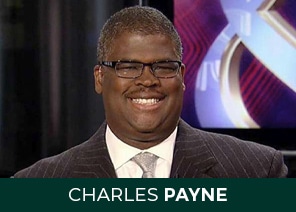Many people own revocable living trusts and consider the idea of making their trust the beneficiary of their IRA. Even before new laws were proposed, the idea was problematic. Unless your trust is specifically worded using what is known as a “conduit provision”, the trust may be a poor choice for an IRA, 401k, 403b, or TSP beneficiary.

The House of Representatives has passed a new bill with a 417-3 vote, entitled “The Setting Every Community Up for Retirement Enhancement Act of 2019”. The law is known by its initials, the SECURE Act. The SECURE Act is expected to pass the Senate by unanimous consent (if they ever get back to working again to pass meaningful legislation.) So, it is not yet law, but if you are an IRA or qualified plan owner, you need to be aware of how it might affect your estate planning decisions going forward.

Under the previous rules, non-spouse beneficiaries could ‘stretch’ their IRA distributions to enjoy major income tax savings. For example, under the old (and still current) rules, if Jane was the owner of a $1 million IRA and left it to her 30-year-old grandson Ryan, Ryan could have stretched the distributions over his life expectancy of 52.1 years. This avoided a potentially large tax hit from a lump sum.

The “Stretch IRA” idea has been popularized by many advisors and journalists over the years. The Stretch IRA was promoted as a way to enrich next generations with lifetime income (courtesy of you) after you have passed. What the advisors often left out at the steak dinner workshops was that inherited IRAs can be subject to the claims of the beneficiary’s creditors. To sidestep that problem, many IRA owners created ‘IRA Conduit Trusts’ with the help of their attorneys to make sure beneficiaries could take only the Required Minimum Distributions and assets in the IRA would remain protected.

The SECURE Act, once passed, would change all that. For most beneficiaries going forward, the ‘stretch’ rules would be eliminated and the beneficiary must withdraw the entire IRA balance within 10 years of the death of the IRA’s owner. The old five year rule is gone, and the non-spouse stretch is pretty much gone. There are exceptions to the 10-year rule, including:
A spouse may roll over the decedent’s IRA to his or her own IRA and stretch the distribution over their lifetime
Children under the age of majority would not start the clock until attaining majority. At that point, they must take distributions under the 10-year rule. A disabled beneficiary or a chronically-ill beneficiary, may also have different treatment.
More than ever before, it is important to meet with a qualified estate planning attorney and a CPA to review how your estate and tax planning ideas will be impacted by the SECURE Act.

The Way It Used To Be
Estate planning for IRAs before the SECURE Act(current law) revolved around naming individual IRA beneficiaries with the intent of creating an inherited IRA for each of them. The beneficiary would then simply take distributions under the Required Minimum Distribution (RMD) rules based on their age.
Naming a Revocable Living Trust as the beneficiary resulted in the RMD being based on the age of the oldest living beneficiary, which was a complication and not always optimal. Alert IRA owners with living trusts sat down with their attorneys alter or restate their trust to include a ‘look-through’ provision to allow the IRA to be distributed through the trust, while preserving stretch IRA benefits. Failure to name individual beneficiaries formerly resulted in the imposition of a Five Year Rule which forced all IRA balances to be distributed within 5 years of the death of the IRA owner.

One key point is to make sure your IRA or qualified plan is kept up to date if your primary and secondary beneficiaries pass away before you do. If a qualified plan or IRA owner fails to name a beneficiary or if the named beneficiary does not survive the owner, the IRA will go to the decedent’s estate, and be subject to probate and payout within 5-years.
The New Rule Applies To ALL Qualified Plans (like 401ks), not just IRAs.
The 10-year rule applies to all qualified plans with balances. This would include all defined contribution plans including 401(k), 403(b), 457(b), 401(a), ESOP, Cash Balance Plans, Profit-sharing plans, and lump-sum distributions from defined benefit plans. Most people roll over these plans eventually into self-directed IRAs.
Spouses Are Still Able To Assume IRA Ownership Upon One Spouse’s Death

Generally speaking, it is common practice for spouses to name each other as the primary beneficiary of their IRAs. Upon death, they are able to assume full ownership of the deceased spouse’s IRA without a hitch. That sill is true, but secondary beneficiaries are now affected under the SECURE Act. Example: if Pete has a $600,000 401(k) and rolls it into an IRA, then subsequently dies, his wife Elaine assumes ownership as her IRA. One day, Elaine passes. All of her IRA balances may be left to children over the age of majority, the 10-year rule will apply.
Many IRA and qualified plan owners name their spouse as primary beneficiary with their living trust as secondary beneficiary. Former probate litigator (and now estate planning attorney) Libby Banks, has told me this: “If it is a couple with responsible adult children, I usually suggest the children as the second beneficiaries. They can treat it as an inherited IRA (since the Secure Act has not yet passed).” You may want to confer with Libby on what her recommendation will be for after the passing of the bill (if Congress can ever agree on anything again!)

As a general rule for purposes of the distribution at death requirements, a trust cannot be considered a “designated beneficiary”—which means a living natural person. However, up until the date that the SECURE Act passes,the law does allow for an exception known as the “look-through” rule. If the trust meets certain requirements including a conduit provision in the trust, the tax law will “look through” the trust to the trust beneficiary.
An IRA owner may also want to name a trust as the beneficiary of an IRA in the following situations:
1) The IRA beneficiary is a minor child. Individuals under age 18 or 21, depending on the state, cannot legally make certain decisions regarding IRA distributions. Consequently, a guardian would likely be appointed by a probate court if a minor child is the named beneficiary at the time of the IRA owner’s death. However, the entire IRA would belong to the child once he or she reached the age of majority, with no restrictions on how such assets were spent.
2) The IRA beneficiary is physically or mentally challenged. A trust may be necessary to ensure that a disabled or incompetent beneficiary is properly cared for after an IRA owner dies.
3) The IRA beneficiary might need help managing the IRA assets. If a beneficiary may require help managing an inherited IRA—particularly if it is quite large—having a trust can help ensure that trustees and other professional advisors will manage the assets prudently, in a fiduciary manner.

4) To protect an unsophisticated beneficiary from creditors. What if that beneficiary is in a risky business or owes people money. That’s a real problem. That’s when it may be wise to establish a trust—which forces the beneficiary to take distributions per the trustee’s directives, under the direction of the Successor Trustee you pick.
5) The IRA owner is in a second marriage and wants to leave income to a spouse for life, with the remainder passing to THE OWNERS CHILDREN from the earlier marriage (rather than to the surviving spouse’s heirs). This has typically been handled with what is known as a qualified terminable interest trust (Q-TIP).
My recommendation: Beware of cheap, over simplified trusts you can buy online, especially if you are dealing with any of the above complications. A good attorney will typically give you thirty minutes of their time to let you know if you need their help. Generally, investing in the services of a qualified, caring attorney can safe many thousands of dollars and prevent unexpected poor outcomes.

Scottsdale Financial Planner Steve Jurich, AIF® is a Kiplinger Contributor, Investment Advisor Representative, and founder of IQ Wealth Management in Scottsdale. He has helped hundreds of families with their financial and estate plans. You can hear Steve daily on KFNN Money Radio (AM 1510 on dial) at 8am and 11am. Podcasts are available 24/7 at RetirementRadioUSA.com











